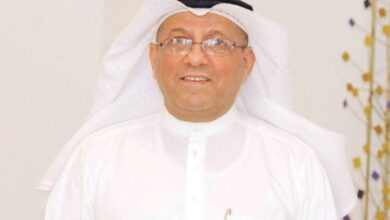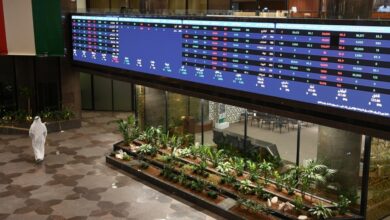
By Sultan Al Jaber
Special to The Times Kuwait
Six months ago, at the United Nations Climate Change Conference in Dubai (COP28), the world transcended geopolitical divides — something few believed possible — and united behind a realistic plan, known as the UAE Consensus, to promote sustainable prosperity and address the threat of climate change. Nearly 200 governments and all sectors of the global economy coalesced around a practical, science-based pathway for achieving low-carbon economic growth while keeping 1.5° Celsius within reach.
The key to the agreement’s success was inclusivity: no one was excluded, no industry was sidelined, and no solution was off the table. As we move to implementation, the world must leave no stone unturned to accelerate progress. Specifically, that means embracing artificial intelligence, which promises to have a far-reaching, transformational impact on the energy transition and is projected to add $7 trillion to global GDP over the next ten years.
It is difficult to overstate the potential of AI in the fight against climate change. This evolving technology can change the pace of progress by redesigning industrial processes, optimizing transport systems, maximizing energy efficiency, and minimizing emissions at scale. AI will also strengthen our adaptive resilience through innovations in agriculture, water security, and health.
But AI development will necessarily lead to a surge in energy demand. Resolving the contradiction between AI’s thirst for electricity and its potential to accelerate a just transition will require technology and energy firms to cooperate in new and creative ways.
There are grounds for optimism. AI is already driving efficiency gains across industries. Through AIQ, its technology joint venture with G42 and Presight, ADNOC has used predictive maintenance and machine-learning tools to reduce carbon dioxide emissions by up to a million tons in just one year. Other power companies are using neural networks to mitigate the intermittency and storage challenges of renewable energy by forecasting weather patterns and preempting peaks and dips in usage.
In material sciences, researchers are using AI to identify the molecular structures best suited for carbon capture. The technology is also transforming agriculture, another energy-intensive sector, by analyzing micronutrients, enhancing crop yields, and minimizing water use by as much as 40 percent. Over the next five to ten years, AI is expected to enable breakthroughs in fusion, hydrogen, and modular nuclear power, long-term battery storage, and as-yet-unimagined climate solutions.
The flipside to AI’s transformative potential is its insatiable energy consumption, which is putting additional stress on an already-stretched power system. Since 2019, emissions from the largest AI firms have increased by roughly 30 percent. By 2030, demand for data-center power worldwide is expected to grow by 160 percent, owing to the technology’s vast processing needs, and these new operations could consume as much electricity as Canada, implying a doubling of carbon dioxide emissions. Bridging this gap will be difficult, as no single energy source is currently capable of meeting such a huge leap in demand.
Major tech companies are starting to collaborate with energy companies to face this challenge head-on. In May, Microsoft and Brookfield closed a deal to develop 10.5 gigawatts of renewable capacity by 2030. Masdar, the United Arab Emirates’ leading renewable-energy company, is on track to quadruple its capacity to 100 gigawatts by 2030 and is exploring opportunities to supply the tech sector with clean electricity. There is also increased investment in nuclear-powered data centers, although these will take decades to build. In the interim, up to 200 billion cubic meters of natural gas — the least carbon-intensive fossil fuel — per year will be needed, as will significant investment in global grid infrastructure to cope with increased demand.
Adopting a holistic approach is critical to addressing these problems and reaping AI’s potential benefits. To that end, I am convening a ‘Change Makers Majlis’ — a majlis being a traditional gathering that encourages the exchange of diverse perspectives — in Abu Dhabi in November to discuss AI and the energy transition. Business leaders from the energy and technology sectors, policymakers, investors, and civil-society organizations will come together to reimagine the relationship between energy, AI, and inclusive economic growth.
The UAE has an established track record as a responsible energy supplier. Given our commitment to sustainable development, and our emergence as an AI leader — with investment platforms like MGX, infrastructure developers like G42, and the region’s largest and fastest-growing large language model, Falcon — we are keen to bring all relevant stakeholders together on an issue of profound importance to all humanity. By building a bridge between energy and AI, we can help realize the UAE Consensus and, in doing so, take advantage of the greatest economic opportunity since the First Industrial Revolution.

Sultan Al Jaber
The United Arab Emirates’ Minister of Industry and Advanced Technology, is COP28 President, CEO of ADNOC, and Chairman of Masdar.
Copyright: Project Syndicate, 2024.
www.project-syndicate.org













